Running can be a lifestyle and is the most popular form of exercise with multiple health benefits. However, when running is done as “monotraining” it can lead to injuries. Monotraining refers to doing only one form of exercise, which causes muscle imbalances to develop and repetitive overuse injuries to occur. Overuse injuries are the most common type of running related injuries and refer to cyclically overloading a part of your body without allowing adequate time for adaptations or healing to occur. Frequently, these injuries are seen when running loads, such as frequency, duration or intensity, are increased too rapidly. In runners, the most common types of overuse injuries are patellofemoral pain, iliotibial band syndrome, plantar fasciitis, Achilles tendinopathy and bone stress injuries.
To help reduce the risk of these running related injuries, there are preventative measures runners can follow.
Geoffrey Dreher, DO
Primary Care Sports Medicine
Assistant Professor, Dept of Orthopaedics
Johns Hopkins University School of Medicine
Team Physician, JHU Blue Jays
The 4 basic principles I discuss are:
1. Avoid monotraining.
a. To reduce your risk of developing muscular imbalances and repetitive overload, the runner should incorporate cross training. This includes strength training, balance drills as well as other non-impact aerobic exercises such as swimming and cycling. These cross training days should include time off from the repetitive impact of running to allow time for the body to recover, adapt to become stronger and heal. For strength training, a major focus should be on heavy resistance exercises and plyometric movements, both of which have been shown to increase runner endurance. Runners should also emphasis core strength for top down control and more effective leg movements as well as foot strengthening for bottom up stability. Both these areas will help improve running efficiency.
2. Have good equipment.
a. For runners, shoes are important. Due to shoe significance, it is recommended to be fitted at a specialty running store. This will allow for proper shoe fit for your foot mechanics as well as for arch support inserts, heel cups or other orthotics to use as needed. You should have ability to try on multiple types of shoes with a dedicated area to run or a treadmill to actively assess comfort and fit. Research supports shoe selection based on individual fit by comfort. Shoes and cushion help absorb shock stress and should not be over worn, typically changed every 300-500 miles.
3. Be prepared.
a. Whether you are just beginning running or training for a marathon, you should develop a plan. This should incorporate how you will gradually increase your running distance, frequency and intensity while avoiding monotraining. A general rule of thumb for running progression is to not increase your weekly running mileage by more than 10% a week to reduce overuse injuries. However, this can be variable based on your starting point and background. Being prepared also means you are fueling your body correctly with proper hydration, diet and sleep. Before running, you should warm up for at least 5-10 minutes with dynamic movements. Static stretching is most helpful after running to help maintain your range of motion and flexibility.
4. Listen to your body.
a. As you run, if you do develop pain it may be best to be evaluated early to limit worsening injury and your time away from running. Pain becomes more concerning if it gradually worsens with running, persists after you run or causes a limp or change in gait. This is also why it is crucial to have days off of impact running to allow your body to beneficially heal and adapt, instead of the continuous stress that builds, overloads and leads to injuries. As you learn about your body, being connected or familiar with a sports medicine and running specialist is key.
There is no perfect running form, however there are typical biomechanical patterns a sports medicine and running specialist can evaluate through physical exam and gait analysis to help running performance before an injury or facilitate recovery after an injury and reduce change of recurrence. Running injuries are typically multifactorial and likely associated with training errors and biomechanical imbalances. Therefore, an individualized approach to your health, prior injury history, exercise routine, mechanics and pain should be discussed. If you do get injured, you should also develop a safe return to running plan.



